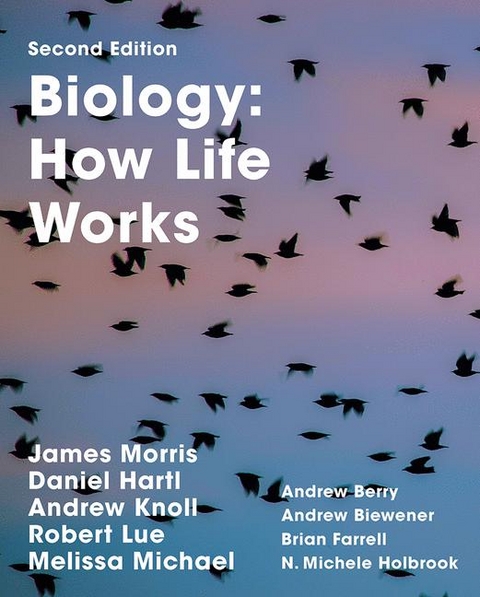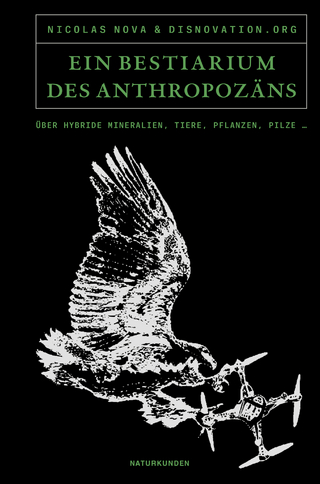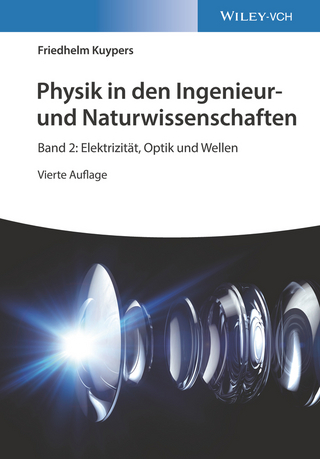
Biology: How Life Works, Volume 2
W.H.Freeman & Co Ltd (Verlag)
978-1-319-04888-4 (ISBN)
- Titel ist leider vergriffen;
keine Neuauflage - Artikel merken
Content is selected carefully, is integrated to illustrate the connections between concepts, and follows six themes that are crucial to biology: the scientific method, chemical and physical processes, cells, evolution, ecological interactions, and human impact.
The second edition continues this approach, but includes expanded coverage of ecology, new in-class activities to assist instructors in active teaching, new pedagogical support for visual synthesis maps, and expanded and improved assessment.
James Morris - Professor of Biology at Brandeis University. He teaches a wide variety of courses for majors and non-majors, including introductory biology, evolution, genetics and genomics, epigenetics, comparative vertebrate anatomy, and a first-year seminar on Darwin’s On the Origin of Species. He is the recipient of numerous teaching awards from Brandeis and Harvard. His research focuses on the rapidly growing field of epigenetics, making use of the fruit fly Drosophila melanogaster as a model organism. Daniel Hartl - Higgins Professor of Biology in the Department of Organismic and Evolutionary Biology at Harvard University and Professor of Immunology and Infectious Diseases at the Harvard Chan School of Public Health. He has taught highly popular courses in genetics and evolution at both the introductory and advanced levels. His lab studies molecular evolutionary genetics and population genetics and genomics. Dr. Hartl is the recipient of the Samuel Weiner Outstanding Scholar Award as well as the Gold Medal of the Stazione Zoologica Anton Dohrn, Naples. Andrew Knoll - Fisher Professor of Natural History in the Department of Organismic and Evolutionary Biology at Harvard University. He is also Professor of Earth and Planetary Sciences. Dr. Knoll teaches introductory courses in both departments. His research focuses on the early evolution of life, Precambrian environmental history, and the interconnections between the two. He has also worked extensively on the early evolution of animals, mass extinction, and plant evolution. Robert Lue - Professor of Molecular and Cellular Biology at Harvard University and the Richard L. Menschel Faculty Director of the Derek Bok Center for Teaching and Learning. Dr. Lue has a longstanding commitment to interdisciplinary teaching and research, and chaired the faculty committee that developed the first integratedscience foundation in the country to serve science majors as well as pre-medical students. Melissa Michael - Director for Core Curriculum and Assistant Director for Undergraduate Instruction for the School of Molecular and Cellular Biology at the University of Illinois at Urbana-Champaign. A cell biologist, she primarily focuses on the continuing development of the School’s undergraduate curricula. Andrew Berry - Lecturer in the Department of Organismic and Evolutionary Biology and an undergraduate advisor in the Life Sciences at Harvard University. With research interests in evolutionary biology and history of science, he teaches courses that either focus on one of the areas or combine the two. Andrew Biewener - Charles P. Lyman Professor of Biology in the Department of Organismic and Evolutionary Biology at Harvard University and Director of the Concord Field Station. He teaches both introductory and advanced courses in anatomy, physiology, and biomechanics. Brian D. Farrell - Director of the David Rockefeller Center for Latin American Studies and Professor of Organismic and Evolutionary Biology and Curator in Entomology at the Museum of Comparative Zoology at Harvard University. He is an authority on coevolution between insects and plants and a specialist on the biology of beetles. N. Michele Holbrook - Charles Bullard Professor of Forestry in the Department of Organismic and Evolutionary Biology at Harvard University. She teaches an introductory course on biodiversity as well as advanced courses in plant biology.
Case 4 Malaria: Coevolution of Humans and a Parasite.- 22. Species and Speciation.- 23. Evolutionary Patterns: Phylogeny and Fossils.- Addition of the effect of mass extinctions on species diversity.- 24. Human Origins and Evolution.- Updated discussion of the relationship between Neanderthals and Homo sapiens, as well as Denisovans.- 25. Cycling Carbon.- Significantly revised link between the carbon cycle, biodiversity, and ecology.- Case 5 The Human Microbiome: Diversity Within.- 26. Bacteria and Archaea.- 27. Eukaryotic Cells: Origins and Diversity.- New branching order of the eukaryote tree in this chapter and onward to reflect new research in the past three years.- 28. Being Multicellular.- Case 6 Agriculture: Feeding a Growing Population.- 29. Plant Structure and Function: Moving Photosynthesis onto Land.- A new discussion of plant nutrients.- 30. Plant Reproduction: Finding Mates and Dispersing Young.- An enhanced discussion of seeds, including the development of the embryo and dispersal structures.- New coverage of the genetic advantages of alternation of generations.- Addition of apomixis.- 31. Plant Growth and Development.- The section on the role of plant sensory systems in the timing of plant reproduction has been moved from Chapter 30 to Chapter 31..- 32. Plant Defense: Keeping the World Green.- 33. Plant Diversity.- Completely revised explanation of the basis for angiosperm diversity.- Plant and animal diversity chapters (Chapters 33 and 44) now include a brief review of organismal form and function, allowing these chapters to be used on their own or before the physiology chapters..- 34. Fungi: Structure, Function, and Diversity.- Case 7 Predator-Prey: A Game of Life and Death.- Brief descriptions of unfamiliar organisms and the major groups of organisms have been layered into the animal physiology chapters, to make it easier to teach physiology before diversity (Chapters 35-42)..- 35. Animal Nervous Systems.- 36. Animal Sensory Systems and Brain Function.- 37. Animal Movement: Muscles and Skeletons.- 38. Animal Endocrine Systems.- 39. Animal Cardiovascular and Respiratory Systems.- A new section on the composition of blood.- 40. Animal Metabolism, Nutrition, and Digestion.- 41. Animal Renal Systems: Water and Waste.- 42. Animal Reproduction and Development.- New diagrams of hormone feedback loops in the menstrual cycle.- 43. Animal Immune Systems.- A new introduction to the immune system.- Case 8 Biodiversity Hotspots: Rain Forests and Coral Reefs.- 44. Animal Diversity.- A new discussion of nematodes.- Introduction of a newly-discovered species, Dendrogramma enigmatica.- 45. Animal Behavior.- 46. Population Ecology.- A new population growth equation.- 47. Species Interactions, Communities, and Ecosystems.- A new discussion of facilitation.- An expanded discussion of herbivory.- A new example of microbial symbionts.- A new discussion of biodiversity and its importance.- 48. Biomes and Global Ecology.- An entirely new chapter on physical processes that underlie different biomes.- Differential solar energy around the globe and seasonality.- Wind and ocean currents.- Effects of circulation and topography on rainfall.- Expanded discussion of terrestrial biomes.- Freshwater and marine biomes.- Integration of concepts of biogeochemical cycles from Chapters 25 and 26 with ecological concepts.- Global patterns of primary production.- Global biodiversity.- 49. The Anthropocene: Humans as a Planetary Force.- A new Core Concept and discussion of conservation biology.
| Erscheinungsdatum | 22.01.2016 |
|---|---|
| Zusatzinfo | 800 p. |
| Sprache | englisch |
| Maße | 155 x 235 mm |
| Themenwelt | Naturwissenschaften ► Biologie ► Allgemeines / Lexika |
| ISBN-10 | 1-319-04888-9 / 1319048889 |
| ISBN-13 | 978-1-319-04888-4 / 9781319048884 |
| Zustand | Neuware |
| Haben Sie eine Frage zum Produkt? |
aus dem Bereich


